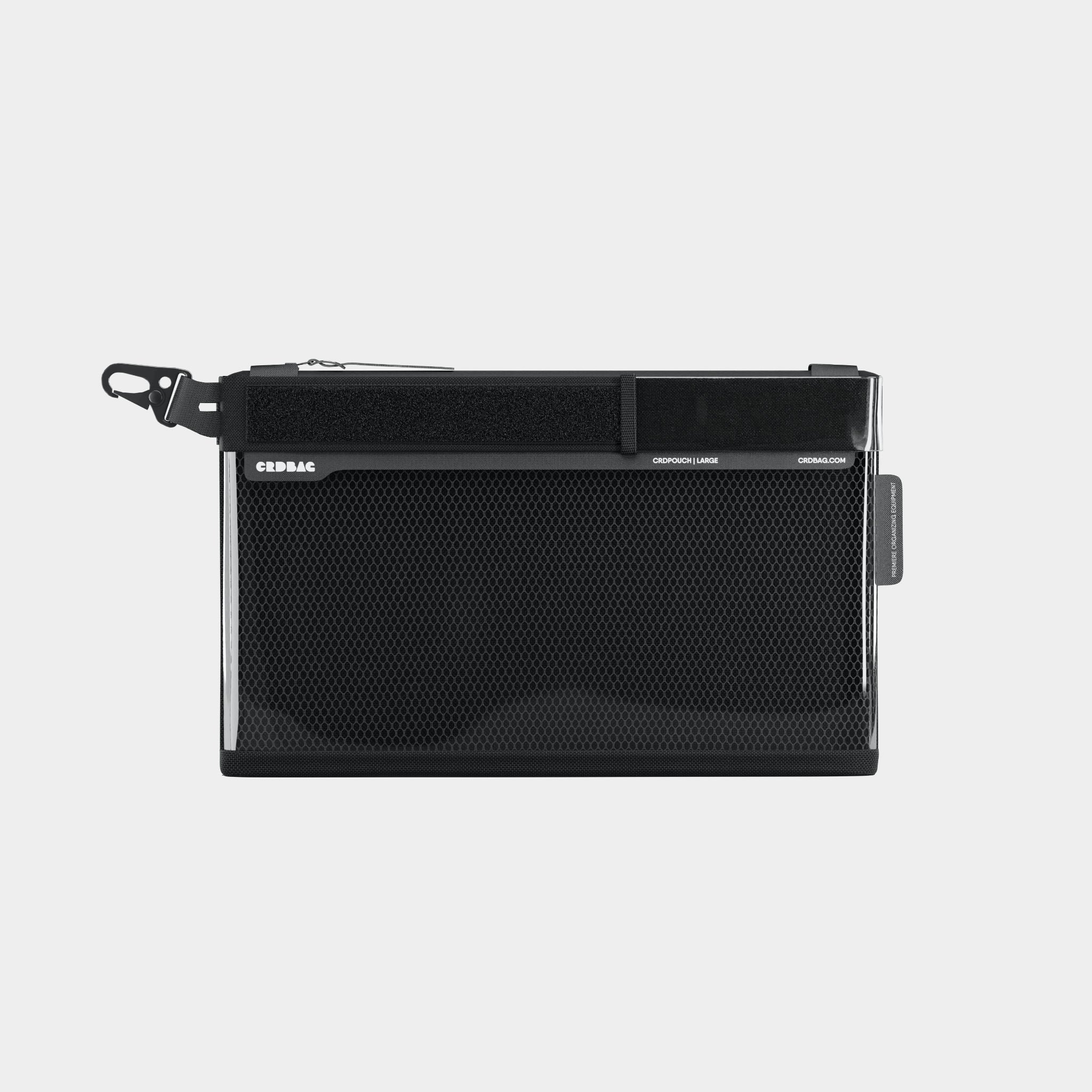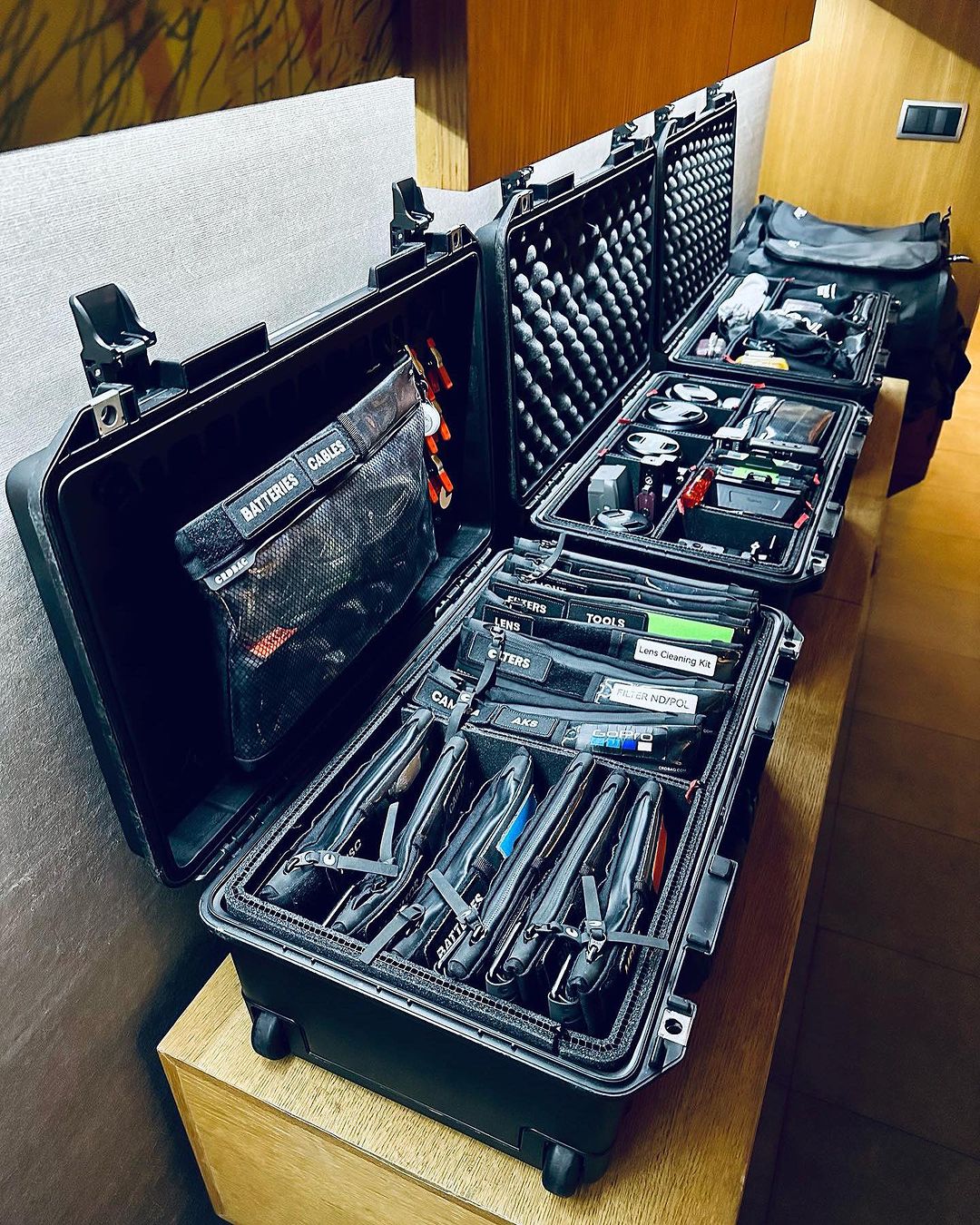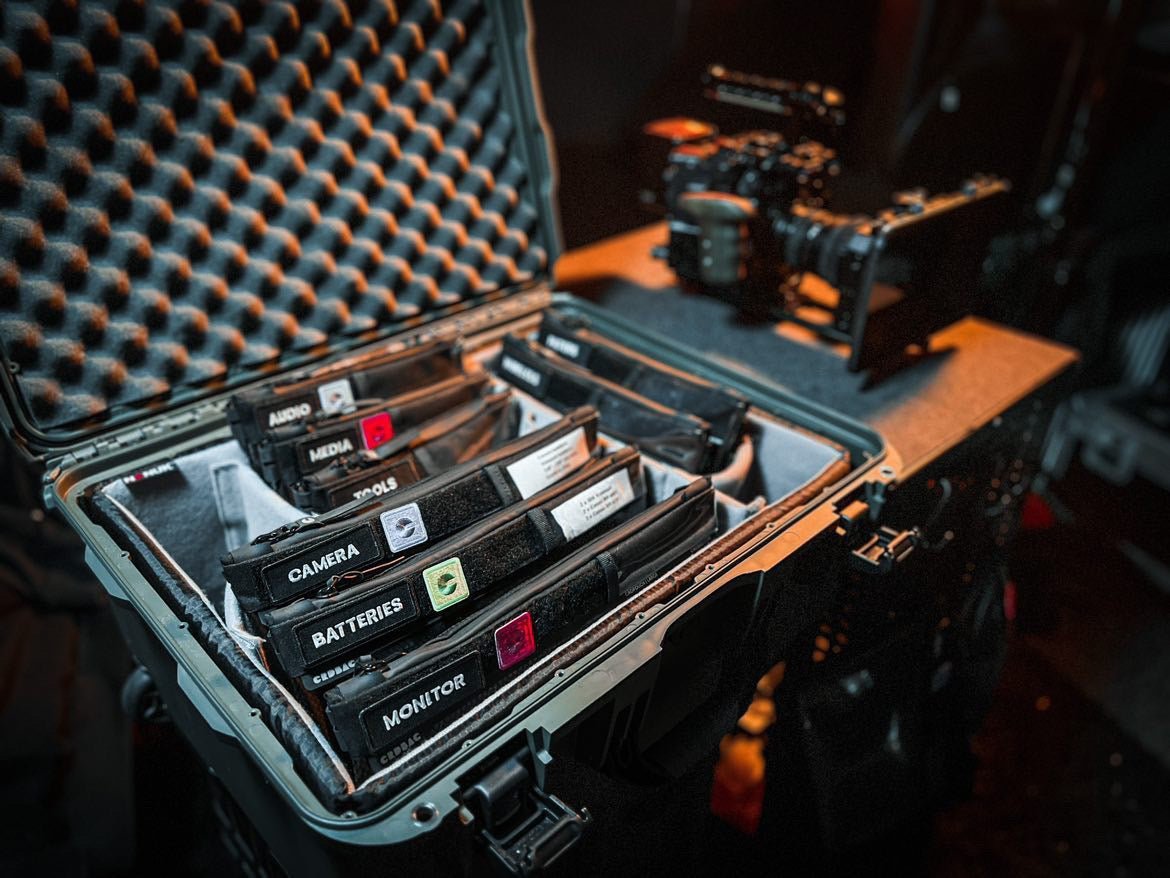Organisiere deine Kameratasche: Tipps und Tricks für einen ordentlichen und effizienten Aufbau
Das Organisieren deiner Kameratasche ist ein wesentlicher Aspekt der Fotografie, der oft übersehen wird. Eine gut organisierte Kameratasche sorgt dafür, dass all deine Ausrüstung leicht zugänglich und geschützt ist, sodass du dich darauf konzentrieren kannst, den perfekten Moment einzufangen. Das Letzte, was du willst, ist, einen einmaligen Moment zu verpassen, weil du das richtige Objektiv oder Zubehör in deiner Tasche nicht finden konntest.
Um deine Kameratasche zu organisieren, beginne damit, deine gesamte Ausrüstung zu inventarisieren und zu bewerten, was du bei einem Shooting mitnehmen musst. Dies hilft dir, die Größe und Art der Tasche zu bestimmen, die du benötigst. Es ist wichtig, eine Tasche zu wählen, die nicht nur bequem zu tragen ist, sondern auch genügend Fächer und Taschen hat, um all deine Ausrüstung unterzubringen. Betrachte auch die Investition in eine Tasche mit individuell anpassbaren Trennwänden, um maximalen Schutz und Organisation für deine Ausrüstung zu gewährleisten.
Sobald du die richtige Tasche hast, ist es Zeit, deine Ausrüstung zu organisieren. Gruppiere ähnliche Gegenstände und weise ihnen spezifische Fächer oder Taschen in deiner Tasche zu, vorzugsweise in beschrifteten Pouches. Dies erleichtert es dir, schnell zu finden, was du brauchst, und verhindert Schäden oder Kratzer an deiner Ausrüstung. Mit einer gut organisierten Kameratasche kannst du dich darauf konzentrieren, atemberaubende Fotos aufzunehmen, ohne Ablenkungen oder Frustrationen.
Verständnis deiner Kameratasche
Wenn es um Fotografie geht, ist es unerlässlich, die richtige Ausrüstung zu haben. Eine Kameratasche ist ein wichtiges Zubehör, das dir hilft, deine gesamte Kameraausrüstung organisiert und geschützt zu halten. Das Verständnis deiner Kameratasche ist entscheidend, um deine Ausrüstung mit Leichtigkeit und Komfort transportieren zu können.
Arten von Kamerataschen
Es gibt mehrere Arten von Kamerataschen auf dem Markt, jede mit ihren einzigartigen Eigenschaften und Vorteilen. Die häufigsten Arten von Kamerataschen sind:
-
Umhängetaschen: Diese Taschen sind perfekt, um eine Kamera mit ein paar Objektiven und Zubehör zu tragen. Sie sind leicht zugänglich und einfach zu transportieren, was sie ideal für Fotografen macht, die viel unterwegs sind.
-
Rucksäcke: Diese Taschen sind so konzipiert, dass das Gewicht deiner Ausrüstung gleichmäßig auf dem Rücken verteilt wird, was sie bequem für längere Tragezeiten macht. Sie sind ideal für Outdoor-Fotografie und Reisen.
-
Rolltaschen: Diese Taschen sind mit Rädern ausgestattet, was den Transport erleichtert. Sie sind ideal für Fotografen, die schwere Ausrüstung wie Lichttechnik mitführen müssen.

Materialien und Haltbarkeit der Taschen
Kamerataschen werden aus verschiedenen Materialien wie Nylon, Canvas und Leder hergestellt. Die Haltbarkeit einer Kameratasche hängt vom verwendeten Material und der Verarbeitungsqualität ab. Eine gute Kameratasche sollte Abnutzungserscheinungen standhalten, deine Ausrüstung vor Umwelteinflüssen schützen und ausreichend Polsterung bieten, um Schäden zu vermeiden.
Bei der Wahl einer Kameratasche ist es wichtig zu berücksichtigen, welche Art von Fotografie du betreiben wirst und welche Ausrüstung du mitführst. Eine zu kleine Tasche kann nicht all deine Ausrüstung fassen, während eine zu große Tasche unhandlich werden kann.
Abschließend ist das Verständnis deiner Kameratasche entscheidend, um deine Ausrüstung mit Leichtigkeit und Komfort transportieren zu können. Durch die Wahl der richtigen Art von Kameratasche und die Berücksichtigung der Materialien und Haltbarkeit kannst du deine Ausrüstung schützen und eine unbeschwerte Fotografie genießen.
Grundlegende Ausrüstungsorganisation
Bei der Organisation einer Kameratasche ist es wichtig, ein System für all deine wesentliche Ausrüstung zu haben. Dieser Abschnitt behandelt die drei Hauptbereiche der grundlegenden Ausrüstungsorganisation: Aufbewahrung des Kameragehäuses, Objektivfächer und Zubehörfächer.
Aufbewahrung des Kameragehäuses
Das Kameragehäuse ist das Herzstück eines jeden Foto-Kits, und es ist wichtig, es sicher und geschützt in deiner Kameratasche zu halten. Verwende bei der Organisation deiner Kameratasche Einsätze oder Fächer mit Polsterung, um dein Kameragehäuse vor Stößen und Kratzern zu schützen. Ein guter Kameraeinsatz sollte genügend Platz bieten, um dein Kameragehäuse sowie angebrachtes Zubehör wie einen Batteriegriff oder einen Gurt aufzunehmen.
Objektivfächer
Objektive sind ein weiterer wichtiger Bestandteil eines jeden Foto-Kits und erfordern eine sorgfältige Organisation, um sie geschützt und leicht zugänglich zu halten. Verwende bei der Organisation deiner Kameratasche Objektivtaschen oder Pouches, um deine Objektive vor Staub und Kratzern zu schützen. Eine gute Objektivtasche sollte gepolstert sein und individuelle Fächer für jedes Objektiv sowie ein klares Kennzeichnungssystem haben, um jedes Objektiv schnell zu identifizieren.
Zubehörfächer
Zusätzlich zu deinem Kameragehäuse und den Objektiven wirst du wahrscheinlich eine Vielzahl von Zubehör haben, das du in deiner Kameratasche organisiert halten möchtest. Dazu können Speicherkarten, Batterien, Filter und Reinigungsutensilien gehören. Verwende bei der Organisation deiner Kameratasche Zubehörfächer oder Pouches, um diese Gegenstände getrennt und leicht zugänglich aufzubewahren. Ein guter Zubehörfach sollte über mehrere Fächer verfügen und aus haltbaren, wasserabweisenden Materialien bestehen, um deine Ausrüstung vor den Elementen zu schützen.
Indem du deine wesentliche Ausrüstung in Aufbewahrung des Kameragehäuses, Objektivfächer und Zubehörfächer organisierst, kannst du schnell und unkompliziert auf alles zugreifen, was du für dein nächstes Fotoabenteuer benötigst.
Anpassung der Taschenaufteilung
Bei der Organisation deiner Kameratasche ist die Anpassung der Aufteilung an deine speziellen Bedürfnisse entscheidend für Effizienz und Komfort. Nutze anpassbare Trennwände und modulare Komponenten, um ein Layout zu schaffen, das für dich am besten funktioniert.
Anpassbare Trennwände
Viele Kamerataschen sind mit anpassbaren Trennwänden ausgestattet, die es dir ermöglichen, Fächer in verschiedenen Größen zu erstellen. Diese Trennwände bestehen in der Regel aus Schaumstoff oder Klettverschluss und lassen sich leicht neu anordnen, um deine Ausrüstung zu passen. Durch die Anpassung der Trennwände kannst du Fächer für dein Kameragehäuse, Objektive und Zubehör schaffen, sodass alles während des Transports an Ort und Stelle bleibt.
Modulare Komponenten
Modulare Komponenten sind eine weitere großartige Möglichkeit, das Layout deiner Kameratasche anzupassen. Diese Komponenten sind so gestaltet, dass sie wie Puzzleteile zusammenpassen, sodass du ein Layout erstellen kannst, das auf deine spezifischen Bedürfnisse zugeschnitten ist. Beispielsweise könntest du eine modulare Komponente verwenden, um einen dedizierten Platz für deine Kamerabatterien und Speicherkarten zu schaffen.
Stelle bei der Auswahl modularer Komponenten sicher, dass sie mit deiner Kameratasche kompatibel sind. Einige Hersteller bieten modulare Komponenten an, die speziell für ihre Taschen entwickelt wurden, während andere Komponenten anbieten, die universeller sind. Es ist wichtig, Komponenten zu wählen, die in deiner Tasche sicher passen, um ein Verrutschen während des Transports zu verhindern.
Insgesamt ist die Anpassung deines Kamerataschenlayouts ein wichtiger Schritt, um organisiert und effizient zu bleiben. Durch die Nutzung anpassbarer Trennwände und modularer Komponenten kannst du ein Layout erstellen, das am besten zu deiner Ausrüstung und deinem Aufnahme-Stil passt.
Schutzstrategien
Polsterung und Abfederung
Eine der wichtigsten Schutzstrategien für eine Kameratasche ist es, sicherzustellen, dass die Ausrüstung im Inneren gut gepolstert und abgefedert ist. Dies ist wichtig, weil es hilft, Stöße oder Erschütterungen, die die Tasche während des Transports erfährt, zu absorbieren.
Es gibt mehrere Materialien, die für Polsterung und Abfederung verwendet werden können, darunter Schaumstoff, Neopren und Gummi. Schaumstoff ist eine beliebte Wahl, da er leicht und hervorragende Stoßabsorption bietet. Neopren ist ebenfalls eine gute Option, da es wasserfest ist und sich eng um die Kameraausrüstung schmiegt. Gummi ist ein weiteres Material, das für Polsterung verwendet werden kann, aber es ist weniger verbreitet wegen seines Gewichts und seiner Sperrigkeit.
Wetterfeste Maßnahmen
Eine weitere wichtige Schutzstrategie für eine Kameratasche ist es, sicherzustellen, dass sie wetterfest ist. Dies ist besonders wichtig, wenn die Tasche in nassen oder feuchten Bedingungen verwendet wird.
Es gibt mehrere wetterfeste Maßnahmen, die ergriffen werden können, darunter die Verwendung einer Regenhülle, wasserdichten Reißverschlüssen und wasserabweisenden Stoffen. Eine Regenhülle ist eine einfache und effektive Möglichkeit, die Tasche vor Regen und Feuchtigkeit zu schützen. Wasserdichte Reißverschlüsse sind ebenfalls wichtig, da sie verhindern, dass Wasser durch den Reißverschluss in die Tasche dringt. Wasserabweisende Stoffe wie Nylon oder Polyester können ebenfalls verwendet werden, um die Tasche vor Feuchtigkeit zu schützen.
Insgesamt ist es wichtig, eine Kameratasche zu wählen, die einen angemessenen Schutz für die Ausrüstung im Inneren bietet. Durch die Verwendung von Polsterung und Abfederung sowie wetterfesten Maßnahmen können Fotografen sicherstellen, dass ihre Ausrüstung während des Transports sicher und geschützt ist.
Zugänglichkeit und Komfort
Bei der Organisation einer Kameratasche sind Zugänglichkeit und Komfort entscheidende Faktoren, die berücksichtigt werden müssen. Eine gut organisierte Kameratasche schützt nicht nur deine Ausrüstung, sondern ermöglicht dir auch den schnellen Zugriff auf die benötigten Gegenstände.
Schnelles Zugangsfach
Eine Möglichkeit, einen schnellen Zugriff auf deine Kameraausrüstung zu gewährleisten, ist die Verwendung von Schnellzugrifftaschen. Diese Taschen befinden sich normalerweise an der Außenseite der Kameratasche, sodass du schnell auf Gegenstände wie Speicherkarten, Batterien oder Objektivdeckel zugreifen kannst, ohne das Hauptfach öffnen zu müssen.
Achte bei der Wahl einer Kameratasche darauf, eine mit mehreren Schnellzugrifftaschen in verschiedenen Größen zu wählen. Dies ermöglicht es dir, kleinere Gegenstände zu organisieren und leicht zugänglich zu halten. Einige Kamerataschen haben sogar spezielle Taschen, die für bestimmte Gegenstände wie eine Wasserflasche oder ein Smartphone ausgelegt sind.
Stativ-Befestigungsmerkmale
Ein weiteres wichtiges Merkmal, das bei der Organisation deiner Kameratasche zu berücksichtigen ist, ist die Stativ-Befestigung. Wenn du planst, ein Stativ zu verwenden, suche nach einer Kameratasche, die über ein eigenes Stativ-Befestigungsmerkmal verfügt. Dies ermöglicht es dir, dein Stativ sicher an der Außenseite deiner Kameratasche zu befestigen, und schafft Platz im Inneren der Tasche für andere Gegenstände.
Stelle bei der Auswahl einer Kameratasche mit Stativ-Befestigungsmerkmalen sicher, dass diese mit der Art des Stativs, die du verwenden möchtest, kompatibel sind. Einige Kamerataschen haben ein universelles Befestigungssystem, während andere möglicherweise eine bestimmte Art von Stativplatte erfordern.
Insgesamt macht das Organisieren deiner Kameratasche mit Blick auf Zugänglichkeit und Komfort dein Fotografie-Erlebnis angenehmer und effizienter. Durch die Nutzung von Schnellzugrifftaschen und Stativ-Befestigungsmerkmalen kannst du sicherstellen, dass deine Kameraausrüstung geschützt und leicht zugänglich ist, wenn du sie benötigst.
Wartung und Pflege
Reinigung deiner Kameratasche
Das Sauberhalten deiner Kameratasche ist ein wichtiger Teil ihrer Pflege. Schmutz, Staub und Ablagerungen können sich im Laufe der Zeit ansammeln und potenziell deine Ausrüstung beschädigen. Um deine Kameratasche zu reinigen, leere sie komplett und schüttle lockeren Schmutz aus. Wische dann das Innere und Äußere der Tasche mit einem feuchten Tuch ab. Wenn die Tasche besonders schmutzig ist, kannst du eine milde Seifenlösung verwenden, um sie zu reinigen; spüle sie jedoch gründlich ab und lasse sie vollständig trocknen, bevor du sie wieder benutzt.
Es ist auch eine gute Idee, deine Kameratasche regelmäßig zu reinigen, besonders wenn du sie häufig oder in staubigen Umgebungen benutzt. Ein schnelles Abwischen nach jedem Gebrauch kann helfen, Schmutz und Staubansammlungen zu verhindern.
Regelmäßige Überprüfungen
Neben der Reinigung deiner Kameratasche ist es wichtig, regelmäßige Überprüfungen durchzuführen, um sicherzustellen, dass sie in gutem Zustand ist. Überprüfe die Reißverschlüsse, Gurte und andere Hardware auf Anzeichen von Verschleiß und ersetze bei Bedarf beschädigte Teile. Inspiziere die Nähte und das Gewebe, um sicherzustellen, dass sie noch stark sind, und suche nach Löchern oder Rissen.
Es ist auch eine gute Idee, die Polsterung in deiner Kameratasche zu überprüfen, um sicherzustellen, dass sie noch einen ausreichenden Schutz für deine Ausrüstung bietet. Im Laufe der Zeit kann die Polsterung komprimiert oder abgenutzt werden, wodurch deine Ausrüstung anfällig für Schäden wird. Wenn du feststellst, dass die Polsterung nicht mehr ausreichend Schutz bietet, ziehe in Betracht, sie zu ersetzen oder zu einer neuen Kameratasche aufzurüsten.
Indem du deine Kameratasche pflegst, kannst du sicherstellen, dass sie jahrelang hält und zuverlässigen Schutz für deine Ausrüstung bietet.
Packtipps
Gewichtsverteilung
Beim Packen einer Kameratasche ist es wichtig, das Gewicht gleichmäßig zu verteilen. Dies hilft, eine Belastung auf einer Seite des Körpers zu verhindern und erleichtert es, die Tasche über längere Zeiträume zu tragen. Eine gute Faustregel ist, schwerere Gegenstände am Boden der Tasche zu platzieren und leichtere oben.
Ein weiterer Tipp zur Gewichtsverteilung ist die Verwendung einer Rucksack-Kameratasche. Dies verteilt das Gewicht gleichmäßig über den Rücken, anstatt das gesamte Gewicht auf eine Schulter zu legen. Zudem kann die Verwendung eines Hüftgurts zur weiteren Gewichtsverteilung und zusätzlichen Unterstützung beitragen.
Platzoptimierung
Die Platzoptimierung in einer Kameratasche ist entscheidend, besonders für Fotografen, die mehrere Objektive und Zubehör mitführen müssen. Eine Möglichkeit zur Platzoptimierung besteht darin, gepolsterte Trennwände oder Einsätze zu verwenden, um Fächer für jedes Element zu schaffen. Dies hilft, das Umherwirbeln zu verhindern und mögliche Schäden zu vermeiden.
Ein weiterer Tipp zur Platzoptimierung ist die Verwendung einer kleineren Tasche oder eines Pouches für Zubehör wie Speicherkarten, Batterien und Objektivfilter. Dies trägt zur Organisation dieser kleineren Gegenstände und ihrer leichten Zugänglichkeit bei.
Schließlich solltest du in Betracht ziehen, eine Tasche mit mehreren Taschen und Fächern zu verwenden, um Gegenstände zu organisieren und zu trennen. Dies erleichtert es, schnell und effizient zu finden, was du brauchst.
Reiseüberlegungen
Beim Reisen mit einer Kameratasche gibt es einige wichtige Überlegungen, die berücksichtigt werden sollten. In diesem Abschnitt werden einige Tipps behandelt, um die Flughafensicherheit zu erleichtern, sowie die Vor- und Nachteile der Wahl einer kompakten oder geräumigen Kameratasche.
Tipps zur Flughafensicherheit
Der Durchgang durch die Flughafensicherheit kann eine Herausforderung sein, aber es gibt Möglichkeiten, den Prozess reibungsloser zu gestalten. Vor allem stelle sicher, dass du die TSA-Richtlinien für das zulässige Handgepäck überprüfst. Dies hilft dir, Verzögerungen oder Beschlagnahmungen bei der Sicherheit zu vermeiden.
Es ist auch eine gute Idee, deine Kameratasche sorgfältig zu packen. Halte alle deine Kameraausrüstungen zusammen und leicht zugänglich, damit du sie schnell aus deiner Tasche zum Scannen entfernen kannst. Erwäge die Verwendung von Packwürfeln oder -taschen, um alles in Ordnung zu halten.
Sei schließlich auf potenzielle manuelle Kontrollen deiner Kameraausrüstung vorbereitet. Dies ist wahrscheinlicher, wenn du viel Ausrüstung hast oder wenn etwas in deiner Tasche einen Alarm auslöst. Bleibe ruhig und geduldig und sei bereit zu helfen, wenn das Sicherheitspersonal dein Gepäck inspizieren möchte.
Kompakt- vs. geräumige Wahlmöglichkeiten
Bei der Wahl einer Kameratasche für die Reise gibt es zwei Hauptoptionen: kompakt oder geräumig. Kompakte Taschen sind ideal für diejenigen, die leicht reisen und nicht viel Ausrüstung mitführen müssen. Sie sind auch einfacher durch überfüllte Flughäfen und belebte Straßen zu manövrieren.
Andererseits sind geräumige Taschen ideal für Fotografen, die viel Ausrüstung mitnehmen müssen, wie mehrere Objektive, Stative und Zubehör. Sie bieten mehr Raum für Organisation und können komfortabler über längere Zeiträume getragen werden.
Letztendlich hängt die Wahl zwischen einer kompakten oder geräumigen Kameratasche von deinen individuellen Bedürfnissen und Vorlieben ab. Betrachte die Dauer deiner Reise, die Art der Fotografie, die du machen wirst, und wie viel Ausrüstung du mitbringen musst, bevor du eine Entscheidung triffst.
Häufig gestellte Fragen
Wie kann man Equipment in einer Kameratasche optimal anordnen?
Bei der Organisation einer Kameratasche ist es wichtig, das Gewicht und die Größe jedes Ausrüstungsstücks zu berücksichtigen. Die schwersten Gegenstände sollten am Boden der Tasche platziert werden, leichtere Artikel oben. Zudem wird empfohlen, häufig verwendete Ausrüstungen in leicht zugänglichen Taschen oder Fächern aufzubewahren, damit du schnell das benötigte Teil greifen kannst, ohne die ganze Tasche durchsuchen zu müssen.
Wie sollten Objektive sicher in einer Kameratasche aufbewahrt werden?
Objektive sollten in gepolsterten Fächern oder Pouches aufbewahrt werden, um Schäden zu vermeiden. Achte darauf, bei der Mitnahme mehrerer Objektive diese voneinander getrennt zu halten und ein Stapeln zu vermeiden. Darüber hinaus empfiehlt es sich, die Objektivdeckel aufgesetzt zu lassen, wenn sie nicht verwendet werden, um das Glas vor Kratzern und Staub zu schützen.
Kann eine Kameratasche die Ausrüstung beim Reisen effektiv schützen?
Ja, eine gut gestaltete Kameratasche kann die Ausrüstung effektiv während des Reisens schützen. Achte darauf, Taschen mit gepolsterten Fächern und Trennwänden zu wählen, um die Ausrüstung sicher zu halten und Schäden durch Erschütterungen auf Reisen zu vermeiden. Zudem kann der Einsatz von wasserabweisenden Materialien helfen, die Ausrüstung vor unerwartetem Regen oder Spritzern zu schützen.
Welche Best Practices gelten für das Packen einer DSLR in eine Kameratasche?
Beim Packen einer DSLR ist es wichtig, das Objektiv zu entfernen und in einem separaten Fach oder Pouch zu verstauen. Dies hilft, Schäden an der Objektivhalterung zu verhindern und stellt sicher, dass das Kameragehäuse sicher in der Tasche befestigt ist. Darüber hinaus wird empfohlen, die Kameragurt um den Hals oder die Schulter zu tragen, um versehentliche Stürze zu verhindern.
Wie kann man den Platz maximieren, wenn eine spiegellose Kamera und Zubehör gepackt werden?
Um den Platz beim Packen einer spiegellosen Kamera und Zubehör zu maximieren, erwäge die Verwendung von kleineren Pouches oder Fächern, um die Ausrüstung organisiert und leicht zugänglich zu halten. Achte auf Taschen mit verstellbaren Trennwänden, die an deine spezifische Ausrüstung angepasst werden können. Schließlich solltest du erwägen, nur das Nötigste einzupacken, um die Tasche leicht und einfach zu tragen zu halten.
Ist es notwendig, gepolsterte Trennwände in einer Kameratasche zu verwenden?
Die Verwendung von gepolsterten Trennwänden ist nicht immer notwendig, kann aber dazu beitragen, die Ausrüstung vor Schäden zu schützen. Trennwände können helfen, die Ausrüstung getrennt zu halten und ein Verrutschen während des Transports zu verhindern. Zudem können gepolsterte Trennwände helfen, Stöße abzufedern und Schäden durch Erschütterungen oder Stürze zu vermeiden.











Hinterlasse einen Kommentar
Alle Kommentare werden vor der Veröffentlichung geprüft.
Diese Website ist durch hCaptcha geschützt und es gelten die allgemeinen Geschäftsbedingungen und Datenschutzbestimmungen von hCaptcha.